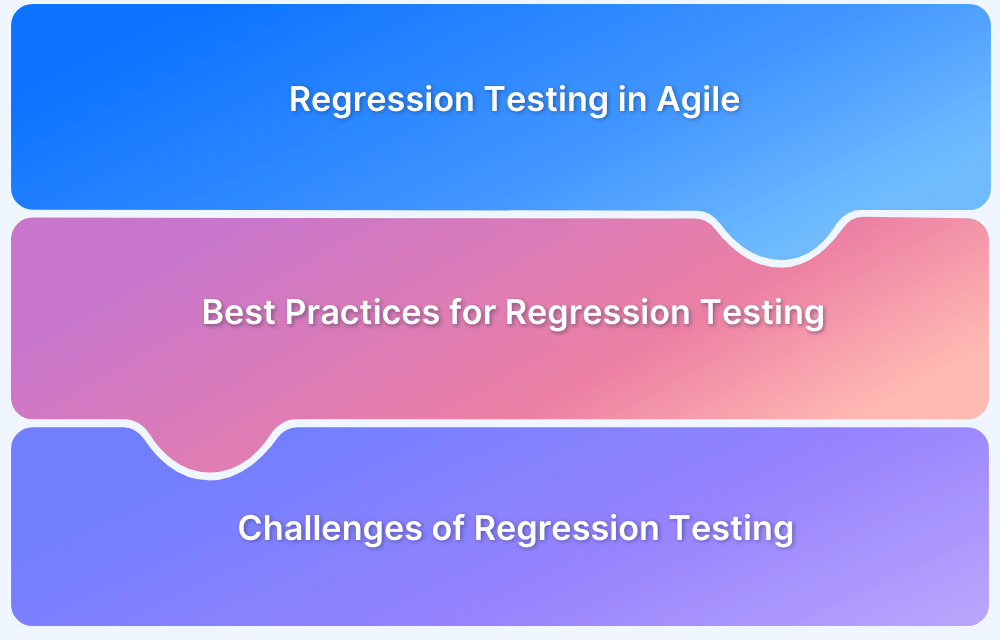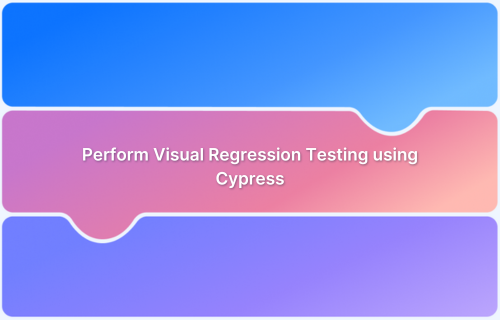Regression testing ensures that new code changes don’t negatively impact existing functionality. It helps identify defects introduced by recent modifications, ensuring the software still works as expected. Understanding and preventing regression defects is key to improving code quality and avoiding issues in future releases.
Overview
Understanding Regression Defects for Next Release
Definition of Regression Defects for Next Release: Regression defects are issues that arise when new code changes inadvertently disrupt previously functioning features.
Challenges of Understanding Regression Defects for Next Release:
- Require significant rework and retesting.
- Can delay new feature implementations.
- May necessitate hotfixes post-release.
- Often lead to repetitive testing efforts.
Prevention Strategies:
- Implement regular regression testing.
- Establish and adhere to coding standards.
- Conduct thorough peer code reviews.
- Perform unit testing for individual components.
- Leverage automated testing tools.
This guide explores what regression defects are and why addressing them is crucial for successful software development.
What are Regression Defects?
Regression defects are errors that occur as a result of changes made to code. In other words, they’re features that were previously working but are now broken.
For example, suppose you are building a new feature in your app and it has some errors and those errors are fixed by the developer. Now all those issues are fixed but that caused some issues in an existing feature that was working fine previously. These defects are known as Regression Defects.
Regression defects occur when a change you create to the software actually creates a controversy. This is often different than shipping new, buggy functionality. The new stuff never worked and you simply missed it in testing. Regression defects mean you’ve broken something.
This makes conceptual sense once you consider the definition of regression. Through your actions, the software had actually regressed — vis a vis that individual behavior, it’s worse than it absolutely was before you modified it.
Must-Read: Defect Management in Software Testing
Make no mistake. Sooner or later, you’ll encounter a regression defect in any piece of non-trivial software. But if you discover yourself buried in an avalanche of them anytime you ship software, it will affect your product release velocity.
Let’s examine why regression defects are important for your release.
Why to Understand Regression Defects?
Regression defects can be very costly and time-consuming to fix. They can also cause your software to become unstable and unreliable.
Common Issues that make Regression Defects tricky:
- All regression bugs, small or high priority, lead to double time consumption because it requires a lot of rework. And to fix these issues developers have very less time.
- Testers have to check those regressions again in different local/QA environments.
- To make sure that the regression bugs are working correctly, the tester has to check others in and around areas related to that feature/page.
- Regression bugs take the place of some new stories/improvement tasks within the upcoming sprint, which delays the implementation of new requirements.
- These types of bugs may appear during the release as well as on production and result in their hotfixes.
- Regression bugs lead to repetitive work.
As a result, it’s important to understand how to prevent a regression defect from happening in the first place.
How to Prevent Regression Defects?
There are several practises and strategies that you can deploy to prevent regression defects and beneft your next release.
Conduct Regular Regression Testing
The most important part to avoid the Regression Defects in Production and keep them fixed before release is to conduct a daily regression test during your releases. Having a Regression Suite and running them before every release will affect fewer hotfixes and customer reporting defects.
While it’s true that code problems create regression defects, but that doesn’t mean that we’re powerless to catch them before users do. A strong regression testing plan can help which can easily be the province of the QA group. Once you try this, you’re going to catch an honest chunk of the regression defects which may otherwise escape.
With BrowserStack, regression testing helps you stay on top the curve by maintaining quality through all your release cycles.
- Test for regression defects on an infrastructure of 3000+ real mobile devices and desktop browsers on the cloud.
- Get faster feedback by distributing your regression tests across hundreds of parallels and run them all at once.
- Seamless integration with Selenium, Cypress, Appium, Espresso, and more.
- No setup or maintenance needed
Automate your Regression Testing
Build Good Coding Standards
Standardization contains a positive impact on any business. Within the software Industry too, there are certain coding standards and practises that are needed for successful product launches.
Creating good quality software and code isn’t as easy as pie. It requires consistent efforts of the software development team to fulfill code quality goals and follow team programming best practices to collaborate successfully. this is often a necessary thing for the software project.
Follow a Coding Style Guide
A style guide tells a developer a way to work with a specific programming language. Programming style guides are composed of rules and guidance. Rules are mandates, with only a few exceptions, enforceable throughout the complete IT organization. Rules keep bad programming behavior explicit.
Conducting Peer Code Reviews
Code review may be a process that allows peers and automatic tools to test proposed changes to a codebase.
- The main goal of a code review is to catch potential issues, security problems, and bugs before they’re introduced to the codebase and stop them from causing production problems.
- Code reviews are often fun if you are attempting to seek out well-disguised bugs before they hurt your production.
You might end up feeling sort of a superhero defending your town whenever you discover or track a bug.
Conduct Unit Testing
Unit testing reduce the number of bugs released in production. The simplest unit testing will come from a developer very near the project, and writing unit tests helps some developers to grasp the code better. It can often be a decent way for brand new developers on the project to induce to grasp code if it had been written by some other person.
Follow-Up Read: Best Practices for Unit Testing
Opt For Automated Testing
One of the worst parts of regression testing is that as your application grows, you’ll run more tests on increasingly complex code. It doesn’t take long to achieve a point where you spend most of your slow and resources on double-checking existing features, otherwise, you de-prioritize regression tests in favor of others.
- Automated regression testing makes it possible to scale your testing efforts and test as often as you must to confirm high-quality software releases.
- It detects the regression defects early and ensures high test coverage during Regression.
Pro-Tip: Visual Regression testing is crucial to checking what your users will witness after any code changes have been executed by comparing screenshots taken before and after code changes.
Percy by BrowserStack is one of the leading tools for automating visual testing. Visual testing does not replace your existing test suite; it simply adds a new dimension to it. Instead of validating the functional behaviour of your website or application, visual tests ensure that it is free of visual bugs and regressions.
- It captures screenshots, compares them against the baseline images, and highlights visual changes.
- With Percy, testers can increase visual coverage across the entire UI and eliminate the risk of shipping visual bugs.
- They can avoid false positives and get quick, deterministic results with reliable regression testing.
Try Percy for Regression Testing
Conclusion
A single regression defect can be very challenging and hard to deal with. However, these can be avoided or found earlier by setting good development practices and an effective test plan. Regression testing seems to be like running the same test cases in every cycle but it is as important as doing functional testing of new features.
- Automation reduces the effort and time consumed in regression testing.
- Repeated regression testing benefits your release cycle by finding application failures, well before release deadlines.
- Opt for BrowserStack to run your automated regression test on 3000+ real devices and browsers and avoid flakiness.
- Rest easy while making sweeping code changes with the assurance that it will capture any resultant bugs.









